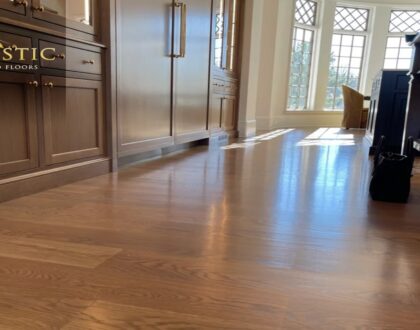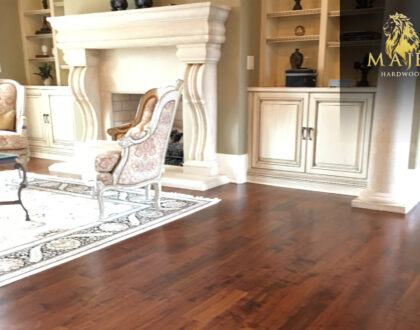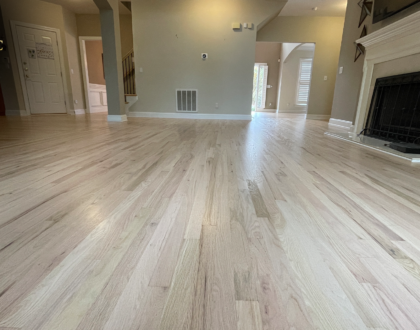Tiger Wood Hardwood Flooring in Your Next House Floor Restoration – A Durable Luxury Choice

Restoring floors is never just about looks, especially when it’s about investing in long-term durability and timeless elegance. Many homeowners face the same challenges. So, they want a floor that stands out, resists damage, and lasts for decades. Yet, options often feel overwhelming and risky.
Poor-quality flooring can scratch, fade, or warp quickly, forcing expensive repairs. Even well-maintained floors often lose their charm over time. Hence, choosing the wrong material means wasted money, more upkeep, and less home value. That’s why research matters before finalizing a choice.
Tiger wood hardwood flooring offers an ideal solution as its exotic beauty and unmatched strength transform restorations into lifelong upgrades. It’s striking, naturally resistant to damage, and easier to maintain than many hardwood options. Homeowners seeking durability and elegance should seriously consider it.
Then, let’s explore why Tigerwood might be the smartest choice for your next floor restoration project.
Tiger Wood Hardwood Flooring – An Exotic Hardwood with Character
Tigerwood is an exotic hardwood known for its bold grain patterns and striking reddish-brown tones. Its name comes from its tiger-like streaks.
This hardwood originates from Central and South America, making it a rare and premium choice for home restoration projects. Tigerwood’s natural density gives it remarkable durability, resisting dents, scratches, and heavy foot traffic better than many domestic hardwoods.
Additionally, it naturally resists moisture and insect damage, making it ideal for humid climates and active households. Because of its vibrant color variation, no two Tigerwood floors look exactly the same, offering a one-of-a-kind interior appeal.
Therefore, many homeowners choose it for luxury spaces, as it blends strength with sophisticated design effortlessly. If you want a distinctive floor that stands out without compromising resilience, tigerwood flooring is worth your attention, and we can help with this.
The Pain Points Tigerwood Flooring Solves for Homeowners
Protection Against Everyday Wear & Tear
High-traffic areas like living rooms and hallways can quickly show scratches, dents, and fading in standard flooring materials. Tigerwood’s density offers exceptional resistance, keeping your floors looking new despite daily foot traffic or heavy furniture movement.
It’s especially beneficial for homes with children, pets, or frequent visitors.
Lower Maintenance Requirements
Many hardwood floors demand frequent refinishing to maintain their original beauty. Tigerwood generally needs less maintenance because its natural hardness prevents most surface damage. Simple cleaning routines, like sweeping and occasional damp mopping, are enough to maintain its rich appearance.
Resistance to Moisture Damage
Moisture is a common cause of warping and discoloration in wooden floors. Tigerwood’s natural oils make it highly resistant to water-related damage compared to softer hardwoods.
Hence, it makes it a preferred option for kitchens, basements, and humid climates.
Boosting Home Value
A well-installed Tigerwood floor can significantly increase your property’s resale appeal. Buyers often associate exotic hardwoods with luxury and long-lasting quality, which enhances your home’s perceived value.
Comparing Tigerwood with Other Flooring Options
- Tigerwood Vs. Oak
Oak is a popular choice, but it’s softer and more prone to dents compared to Tigerwood. Tiger wood hardwood flooring also offers more striking color variations than Oak’s relatively uniform grain pattern.
- Tigerwood Vs. Maple
Maple is lighter in tone and less dense, making it easier to scratch. Tigerwood’s darker, richer color hides imperfections better over time.
- Tigerwood Vs. Bamboo
Bamboo is eco-friendly, but can be susceptible to moisture swelling. Tigerwood outperforms it in moisture resistance and natural hardness.
Design Versatility – Matching Tigerwood with Home Interiors
1. Modern Interiors: Tigerwood’s bold patterns make a statement in minimalist spaces, adding warmth without overwhelming sleek design elements.
2. Traditional Homes: In traditional interiors, Tigerwood enhances the elegance of classic furniture and warm color palettes.
3. Open-Concept Spaces: Its dramatic streaks visually define areas, helping large spaces feel connected yet distinctive.
Installation Considerations for Tigerwood Flooring
Professional Installation Recommended
This requires specialized tools and skills for proper installation. Professional hardwood flooring installation in Charlotte NC, ensures tight seams and precise cutting for a flawless finish.
Acclimation Before Installation
Tigerwood should be stored indoors for several days before installation to adjust to your home’s humidity levels. Hence, this prevents post-installation expansion or contraction.
Subfloor Preparation
A level and dry subfloor is essential for preventing creaks and gaps over time. Moisture barriers may be needed in humid climates.
Maintaining Tigerwood Floors for Long-Term Beauty
Regular Cleaning: Dust and grit can scratch even the hardest floors. Use soft brooms or vacuum cleaners with hardwood settings.
Avoid Excessive Moisture: While resistant to moisture, standing water should still be wiped immediately to prevent potential staining.
Periodic Refinishing: After several years, refinishing can restore Tigerwood’s original luster if surface wear occurs.
Eco-Friendliness And Sourcing
Tigerwood is often harvested from responsibly managed forests. Homeowners should look for FSC-certified suppliers to ensure sustainable sourcing. Therefore, choosing certified products supports environmental conservation while providing premium flooring.
Cost Considerations – Is Tigerwood Worth It?
Tigerwood is more expensive than domestic hardwoods due to its rarity and superior performance. However, its longevity and minimal maintenance make it a cost-effective choice over time. It’s an investment that pays off in durability, beauty, and resale value.
When Tigerwood May Not Be The Right Choice
Homes seeking very light flooring tones may prefer Maple or Ash. Tigerwood’s bold contrast may not match every design style. Its hardness can also make DIY installation challenging for inexperienced homeowners.
Expert Tips for Choosing Tigerwood Flooring
Always order extra planks for replacements and pattern matching.
Use felt pads under furniture legs to prevent scratches.
Control indoor humidity levels to maintain floor stability.
Final Thoughts
Tiger wood hardwood flooring is more than just a surface; it’s a long-term design investment with exceptional durability and stunning visual appeal. For homeowners facing restoration challenges, its strength, low maintenance, and resistance to damage make it a wise choice.
Our professional at Majestic Hardwood Floors ensures it performs flawlessly for decades, offering both style and value. If you are ready to elevate your space, Tigerwood-like flooring options deliver unmatched beauty as well as lasting performance.



